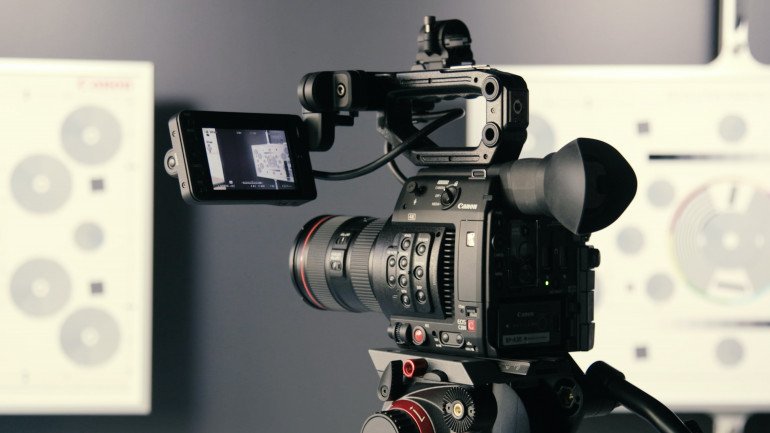For decades, magazine editors often relied on a handful of maxims to attract readers: Young is better than old. Pretty is better than ugly. Rich is better than poor. Film stars outsell television and music stars. Anything sells better than politics, and nothing sells better than a dead celebrity.
But they have had to devise new rules when experimenting with digital video, a medium they hope will be a savior for their struggling businesses as marketers flee print.
Mental Floss — a quirky 13-year-old magazine published nine times a year and specializing in knowledge and trivia — has become one of the industry’s biggest and unlikeliest video success stories by deploying a secret weapon — John Green, the author and YouTube star.
Mr. Green wrote for Mental Floss earlier in his career, long before he became famous for “The Fault in Our Stars,” the blockbuster young adult novel adapted for a feature film released in June.
Last year, he began hosting a weekly YouTube show for Mental Floss called “The List Show.” It offers roughly eight-minute segments crammed with information to quote at cocktail parties, like “26 Amusing Facts About Amusement Parks” and, most recently, “25 Famous People Who Were Once Interns.”
Thanks largely to Mr. Green’s star power and gift for reaching YouTube-watching millennials, Mental Floss has received more than 81 million views since posting its first video in February 2013, according to the video-tracking firm Visible Measures. As of Sunday, Mental Floss’s 88 videos were each viewed an average of about 921,000 times.
“Mental Floss has established itself as a publication that really kind of gets it,” said Joshua Cohen, co-founder of the digital publication Tubefilter, which reports on the video entertainment and digital media industries.
The magazine’s video statistics dwarf those of more established brands like Wired, whose 1,640 videos produced since 2005 have attracted 91 million views with a per-video average of about 55,700. Vogue, which has posted videos since 2008, has had 21 million views and an average per video of about 17,700.
Mental Floss’s impressive YouTube numbers are something of an outlier for the magazine industry, which has hailed video as a way to counter its declining financial prospects. Making money in online video has been especially perplexing to some of the biggest magazine brands, which have poured money into producing high-quality video content.
Condé Nast, which for nearly three years has tried to expand its presence in the entertainment industry, hosted a splashy upfront event in May 2013 showing off the company’s first videos. Joseph A. Ripp, the chief executive of Time Inc., has also cited video as an area in which the company would aggressively expand now that it is independent from its former parent, Time Warner Inc. Yet neither has been able to attract the video viewership numbers Mental Floss has.
Besides Mental Floss, YouTube viewers have favored magazines like Make, which offers advice videos on topics like building your own remote control. Another success has been Seventeen, which teamed with the YouTube network Awesomeness TV and restarted its YouTube channel in January.
While younger readers and viewers seem to spend more time on YouTube, a youthful audience is not the only driver of success. Interviews with YouTube video producers show that it also helps to think that what works on YouTube is not the same as what works on television.
Seventeen magazine now runs a daily YouTube show and will dedicate its October issue to YouTube stars. The magazine’s YouTube channel has had 117 million views since it was started in 2006, according to Visible Measures. Its viewers are eager to watch advice videos on topics like nail painting and making cutoff shorts to girls ruminating about the latest Taylor Swift video.
Ann Shoket, the editor in chief of Seventeen magazine, noted that it was crucial that Seventeen create content very different for YouTube.
“What works in the YouTube system is different from what works on other platforms,” she said. “What makes the YouTube stars so compelling is that they are so candid and so real and they talk to their viewers like they are their friends.”
In that regard, Mr. Green is a model YouTube star, attracting millions of fans across the globe to the Vlog Brothers YouTube channel he created with his brother Hank, and to their Crash Course educational videos.
But before the Vlog Brothers, John Green was a lesser-known writer contributing articles to Mental Floss. He has always had a soft spot for the magazine, having attended a boarding school near Birmingham, Ala., with its first editor, Neely Harris. (The school, Indian Springs School, inspired the setting for his first novel, “Looking for Alaska.”)
Mental Floss was one of the first outlets that paid him to write. While working on his early fiction, Mr. Green wrote for Mental Floss gift books like “Scatterbrained,” “What’s the Difference” and “Cocktail Party Cheat Sheets.”
So a few years ago, when Mental Floss’s co-founders, Will Pearson and Mangesh Hattikudur, wanted to develop videos, they contacted Mr. Green for advice. He said the magazine’s articles on topics like “Why Do Itches Itch?” and “Can Cuteness Stop Aging?” lent themselves to a list format for its videos, similar to some of the content found on the popular website BuzzFeed.
Soon Mr. Green, who is based in Indianapolis, and his video team worked with Mental Floss’s staff in New York. Mr. Green started to host a weekly Mental Floss video show on topics like “33 Amazing Toy Facts,” “50 Common Misconceptions” and “20 Misconceptions About Sex.”
Meredith Danko, the show’s head writer, said the videos aimed to deliver a lot of content in a lighthearted way and short space of time. She added that it helped that Mr. Green was “a very fast talker.”
The videos have attracted advertisers like Lexus cars, Geico insurance and Dos Equis beer, Mr. Pearson said. They account for about 12 percent of the magazine’s advertising revenue and 5 percent of the company’s overall revenues, which includes circulation and e-commerce. Mental Floss is also attracting a new audience rather than replicating its existing one: The median age of its YouTube viewers is 25, while the magazine’s median age is 33.
Not everything in Mental Floss’s magazine translates into video, said Jason English, editor in chief of the magazine’s website. A popular article it published about alternative punctuation marks, for example, did not have enough visual elements to work as a video.
Mental Floss’s videos appeal to fans like Liz Moulton, 26, a veterinary technician from Ontario who said she watched YouTube videos five to six hours a day. She is a big John Green fan, and discovered Mental Floss on YouTube through him. She says she has continued to watch because she likes its educational content.
“People like small tidbits of information people can talk to their friends about,” Ms. Moulton said.
Mental Floss videos make up about 15 to 20 percent of the content Mr. Green’s company produces. He said Mental Floss’s videos were successful because the company treats its YouTube channel as a distinct product from its magazine.
Other titles try to replicate their magazine’s print product on video, which Mr. Green called a losing proposition. “It’s like asking an elephant to be a really good penguin,” he said.



